My next two records would be for Gramavision, which had an important run of documenting creative and interesting music in New York. When I met flutist and composer James Newton there was some shared vision between us.
The musicians in Newton’s circle included people like Anthony Davis, Abdul Wadud, and Pheeroan akLaff. In that world there was a real dedication to finding a bridge to contemporary European Classical music, and I appreciated that perspective: For example, their bassist, Rick Rozie, was in the Hartford symphony. A lot of their first records were on India Navigation, which was a well-meaning but bare bones affair owned by a lawyer who helped musicians, Bob Cummins, before several artists on that roster sort of moved over to Gramavision, owned by Jonathan F. P. Rose, whose family was important in NYC real estate. (Fredrick P. Rose Hall at Jazz at Lincoln Center is named for Jonathan’s father.) I’m on Newton’s Gramavision LPs Daydream (1983) and Luella (1984), which led into my releases Oshumare (1985) and Rah (1988).
Some people really like Oshumare. Billy Drummond told me he thought it was one of the best records of the whole era; Ethan really loves it too. Dave Holland is on both Enchance and Oshumare, and even Dave asked me, “How did you like this one, man? This was a lot better, right?” — but I didn’t agree with him, especially now. Oshumare felt almost a little commercial after Enchance. Of course, the music and the style was my choice, but, looking back, I appreciate the first blast of avant-garde more than the comparatively conservative follow-up. But, like Enchance, the musicians on Oshumare are a group of people not usually associated with each other, and they certainly all do play very well!
Mark Gray is an excellent studio musician in addition to being a talented jazz pianist. I met Mark on a Hubert Laws date, and he became part of the social system I had with my first wife Dolores, Hannibal Peterson, Carvin, Lott, and so forth. Mark contributed to Enchance, but is more visible on Oshumare, taking a synthesizer solo on the opening “Duchess.” For a time, Mark was the one to help me put my songs in proper order, and on Oshumare they are “Duchess” and “Lorca.” Going forward, many of my compositions would reflect my family. “Duchess” is for the grandmother who bought me my first drum, and “Lorca” is for my son, who is now a well-respected drummer living in California.
James Newton had hired Kenny Kirkland for a gig and I was impressed right away. I then checked out the ECM records Kenny made with Miroslav Vitous and thought that was the way he was playing: Romantic and multi-directional. The Kirkland legend has grown over the years, and at this point we all know he was one of the true greats of his era. However, when I called him for Oshumare, in my mind Kenny was mainly a romantic player, I hadn’t heard him with Jeff Watts yet. The waltz he contributed to the date, “Chance,” is really beautiful.
Mark played keyboards and Kenny played piano, but there are also two guitarists on the album, Bill Frisell and Kevin Eubanks. I had a dream with two guitarists playing together: it sounded like a harp, and I knew that John Coltrane suggested that Alice Coltrane start playing a harp. Upon awakening, I thought I should get two guitarists for my next album. When the Gramavision opportunity arose, I started asking around, and bassist Marc Johnson told me one of the guitarists needed to be Bill Frisell. I asked Marc what Frisell sounded like. Marc frowned, thought about it, and replied, “I can’t tell you.”
That was good enough for me, so I called Bill for the date, and his piece “Waiting Inside” was strong and evocative. Dave Holland recommended Kevin Eubanks, who also came from a serious musical family.
I had heard Branford Marsalis with Art Blakey, and had also played a week in Ron Carter’s band with Wynton, Branford, and myself. (The repertoire for that piano-less quartet ended up on Ron’s album Etudes with Art Farmer, Bill Evans, and Tony Williams.) At that time, Branford reminded me of Wayne Shorter a bit, like his fine solo on Dave Holland’s fast jazz tune “Cosmosis.”
Steve Coleman was obviously already on his own path, although Steve got a lot of direction from the important drummer/composer Doug Hammond. When I saw a performance of Doug’s band with bass, cello, and Steve, I really liked Steve’s conception. In recent years Steve and I have been more in touch, for Steve is a perpetual student, just like myself.
Kenny Kirkland, Bill Frisell, Kevin Eubanks, Branford Marsalis, Steve Coleman: These are all important and influential names now — in particular, Steve’s original concepts dominate the creative scene — but at the time they were all simply young cats that I thought had potential.
Violinist Didier Lockwood was a last-minute addition. Just a few days before my date, I participated in Didier’s Gramavision recording Out of the Blue with Gordon Beck and Cecil McBee. Probably thanks to my grandmother Viola, I always kept up with an interest in romantic European classical music, and I loved the sound of Didier right away. He brought something special to Oshumare — try what he plays on “Lorca” — and I was so pleased with the addition of violin that I would feature Mark Feldman in my first working band a few years later. Manolo Badrena played hand drums on a few tracks, giving this date a truly contemporary flavor.
Overall, Oshumare was a relaxed session, and features a mysterious painting from Ornette Coleman’s collection on the cover.
The follow-up, Rah, is a memorial for my brother Ronald Alfred Hart, who died suddenly of a heart attack in Hawaii after a basketball game. (Rah is R.A.H., his initials.) Three pieces on this LP were specifically composed for Ronald. “Motional” is for the way he moved in sports (he was a beloved coach for football and basketball, and worked at Howard University and other places), “Renada” is the combination of his two daughters, Ronda and Renee, and “Naaj” means “sun” in Wolof.
“Ra” (like “Rah”) can mean sun as well, and I had meant for the cover to the LP to be a sun, but John Blake beat me to a sun-themed cover for Gramavison, so we went with a picture of a cymbal that still looks a bit like a sun.
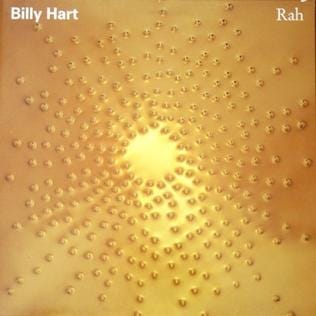
Some of the musical circumstances surrounding the recording of Rah were a bit rushed. It was supposed to be Kenny Garrett and Branford Marsalis, but Garrett went with Miles Davis and Branford never showed for the rehearsals. In a panic I called Dave Liebman for heat (more on Dave below) and Ralph Moore for lyricism. Eddie Henderson returned on trumpet, sounding great as always, and Dave’s wife, Caris Visentin, thickened the texture with oboe on Liebman’s song “Junque.”
One of the highlights is Kenny Kirkland’s wonderful, ferocious solo on “Naaj.” At that time, my four favorite bass players were Buster Williams, Dave Holland, Cecil McBee, and Eddie Gomez, and Rah has a couple of Eddie’s Spanish-influenced, romantic, lyrical bass solos.
Bill Frisell and Kevin Eubanks were back again from Oshumare. It worked, but neither album really features the two guitars playing together like a giant harp the way I first dreamed it. Still, the two Gramavision LPs are a nice snapshot of the times, and they both came from that dream of two guitars.
Enchance, Oshumare, and Rah are all strictly studio dates. The first band of mine that played gigs was Such Great Friends (1983) with Billy Harper, Stanley Cowell, and Reggie Workman, which evolved to Great Friends (1986) with the addition of Sonny Fortune. When a Japanese promoter asked me to put a band together, I suggested some of my favorite musicians who were already familiar with Japan. I never intended to formally lead that group, it was a collective.
Reggie was a bit older, he had worked with John Coltrane and Art Blakey, and went on to be active in all sorts of fields, including being a pillar of jazz education at the New School. Stanley Cowell knew the whole history and played it his own way. Billy Harper was coming out of Coltrane, a lot of power and commitment to the gospel ethos, a true Texas tenor. Sonny Fortune was similar, an incandescent force but on alto.
For Harper and Fortune, Coltrane was like a religion, and that was OK with me, for Coltrane was my religion, too. Harper was more quiet, but Fortune loved to talk about music. When Sonny Fortune called me on the phone, if one of us mentioned John’s name, that was it, we would discuss John for two or three hours.
It’s not easy to be in a collective. In the end certain people take charge, and that’s probably right, for usually those people are doing all the administrative work. I enjoyed both versions of Great Friends, but not every internal interaction was smooth sailing. Those two Great Friends records also have lesser production values; certainly the albums solely under my own name sound much better.
The next two records were for Arabesque and continued somewhat in the same vein as the Gramavision albums. The head of Gramavision, Jonathan F. P. Rose, told me he liked me, but that he couldn’t support more releases unless I took a band out on tour. When Daniel Chriss asked me to record for Arabeske, I looked for musicians that might actually be able to go on the road. The same basic line-up is on both Amethyst and Oceans of Time, and together they may be my most forceful statement as a leader, where I was calling all the shots and writing a lot of music. As with all my albums up to this point, it was a diverse cast of people who may have never played together otherwise.
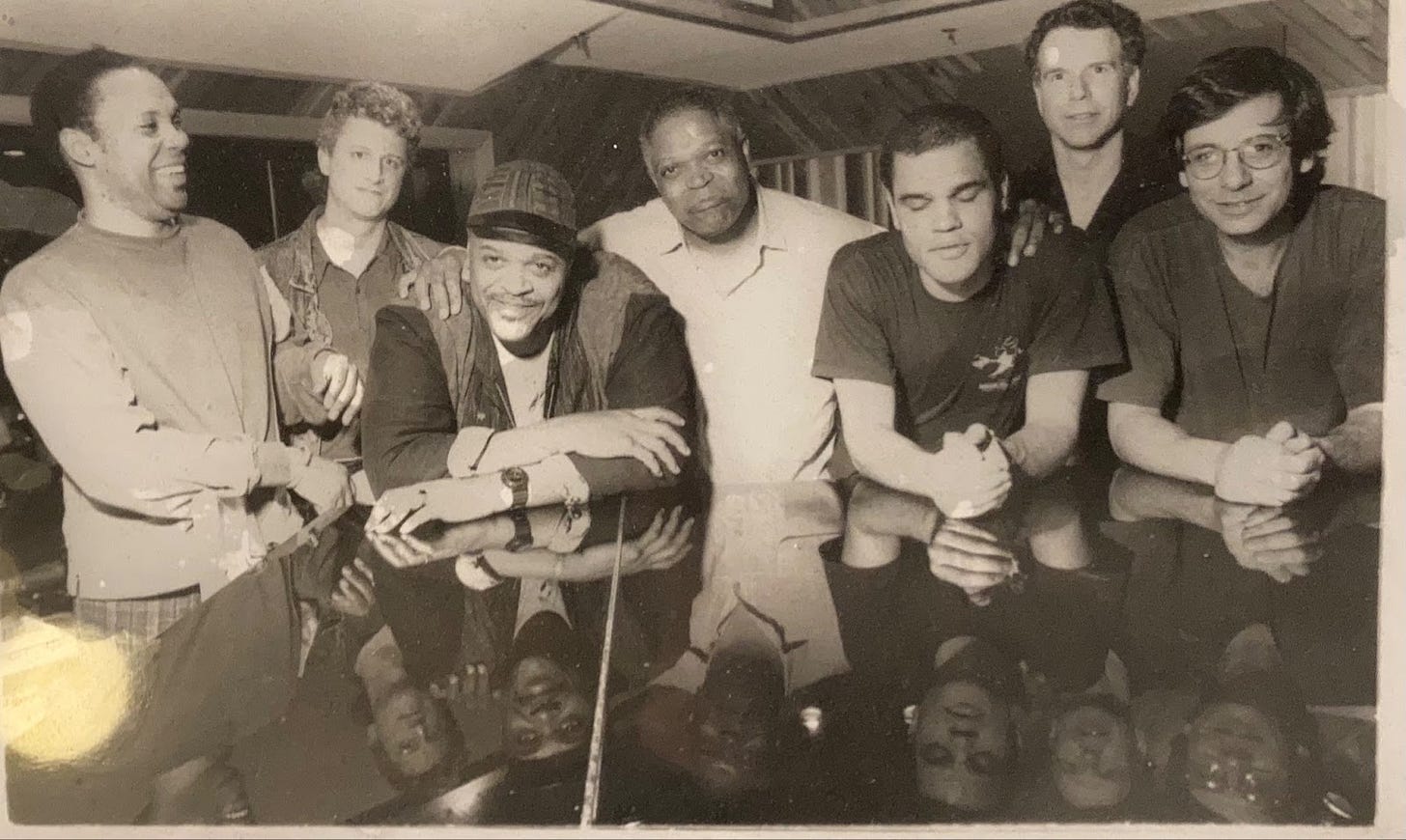
(Santi Debriano, David Kikoski, John Stubblefield, Billy Hart, David Fiuczynski, Mark Copland, Mark Feldman)
John Stubblefield was a soulful tenor player but also a proficient arranger and composer. He was from Arkansas, and his heart was in the blues. Stubblefield was also a member of the AACM, at least for a time, and I was attached to the idea of someone like that in my band. At the opposite end of the spectrum, Mark Feldman was a rhapsodic violinist who loved European classical music. On Stubblefield’s tune “King of Harts” first Stubblefield plays, then Feldman plays. They couldn’t be more different, but they both fit my music.
Having all this guitar and piano on these Gramavision and Arabesque records gives them a somewhat symphonic atmosphere. David Fiuczynski is well known for his rock group, the Screaming Headless Torsos, but I saw Fiuczynski in Ben Perowsky’s band where he impressed me with his improvising. Fiuczynski sounded enough like my dream of two guitarists for me to call him cold. On his fiery “Melanos,” Fuze pulls out all the stops.
Dave Kikoski is a more obvious choice, his talent speaks for itself, and at that point he had been playing with Roy Haynes for several years. I met Kikoski on a nice Ralph Moore record date with Buster Williams, 623 C Street. Kikoski impressed with his facility, he had that kind of McCoy to Herbie to Chick thing we all like, but he did it in his own way. Try Kikoski’s “Shadows” for Dave in a more reflective mood.
Santi Debriano is from Panama and has a lyrical and modern conception. Santi takes a really beautiful solo on “Amethyst.” Marc Copland guests on synthesizer on two tunes; Marc and I had been playing trio with Gary Peacock.
For the second Arabesque date, Oceans of Time, Chris Potter was a guest artist because Chris had subbed for Stubblefield on a few gigs. Chris was already a star at a very young age. I liked the two tenors in the front line, and afterwards tried to continue that when I could. Craig Handy filled in for Stubblefield at the reunion gig in Healdsburg.
The name of the title track, “Oceans of Time,” is from a line in Bram Stoker’s Dracula, where Gary Oldman says, “I have crossed oceans of time to find you.” Women can’t resist the archetype of Dracula, and men can’t resist the archetype of Carmen (from the Bizet opera). In the end, I am a romantic!
Apart from the meaning in the movie, I like “Oceans of Time” as a phrase, suggesting all kinds of music and rhythm, which is also why it became the title of this memoir.
Musically, my song “Oceans of Time” is based on certain family whistles that my parents used when calling Ronald and me in for dinner. My father’s whistle was fast and short, while my mother’s was more bluesy. We’d be playing down the hill with a bunch of other little kids…but when we heard those whistles, we knew it was time to go in and wash up.
This group played in New York and toured Japan. I always meant to get back to the Oceans of Time band, it really seemed to be the most like me of all the bands I led. But the phone always kept ringing for any group but my own.
By this point, I was well into long-term associations with Dave Liebman and Richie Beirach. These two really go together, they have fed off of each other musically for over 50 years now. Their original Quest group was with George Mraz and Al Foster, but when Al left to play with Miles Davis they got me, and when George went with Tommy Flanagan they got Ron McClure.
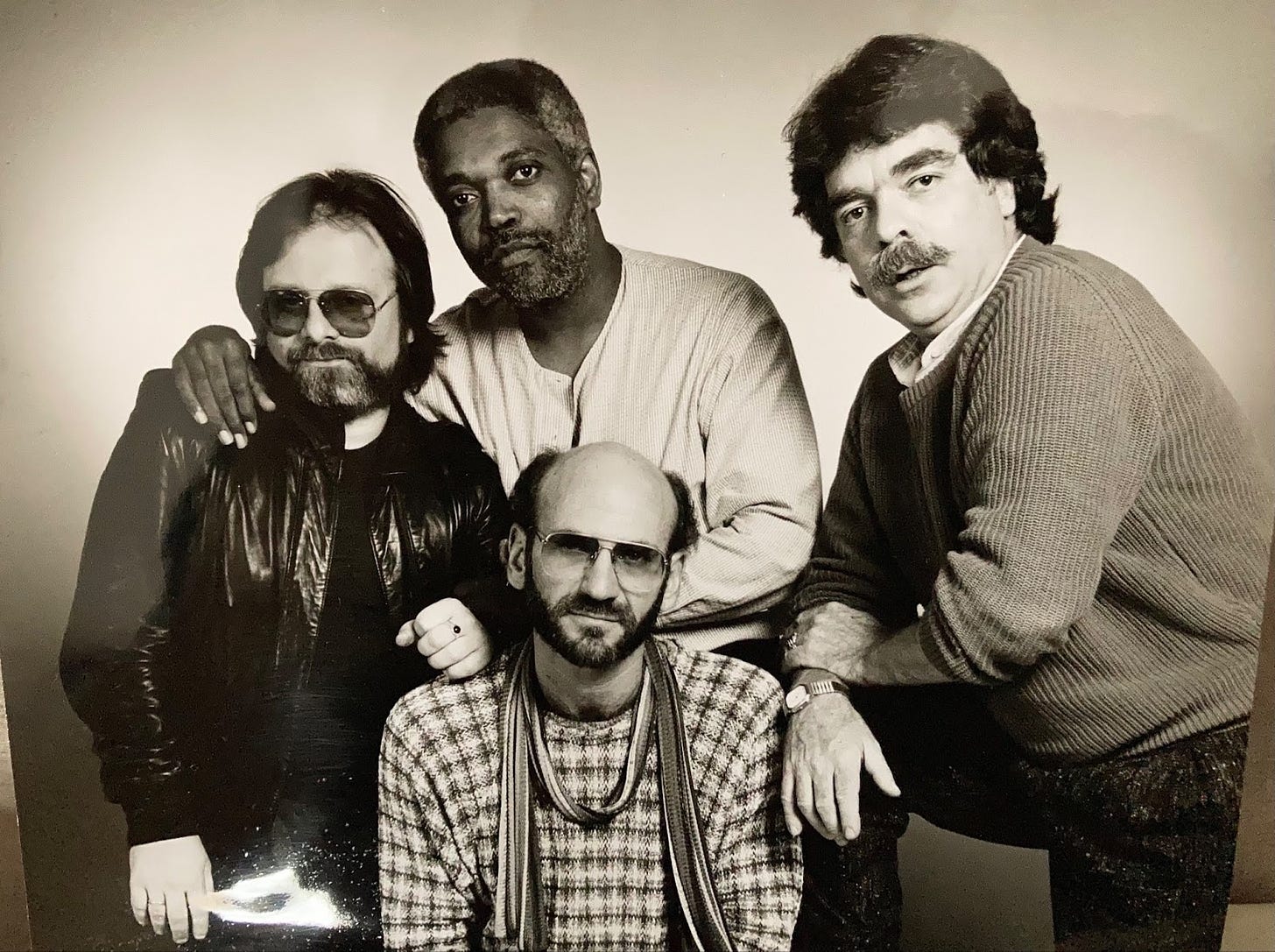
(Quest: Richie Beirach, Billy Hart, David Liebman, Ron McClure)
In the final analysis, Quest is really Liebman and Beirach’s band, but they bill it as a collective, and we all play like we are leaders. In some ways Quest was the most comfortable I felt since the Mwandishi sextet, at least in terms of a band that gave me a chance to develop my drum language on the gigs in real time.
Liebman had played with Miles Davis and Elvin Jones, and was coming out of that post-Coltrane thing. (Liebman and I are on Miles’s On the Corner together.) Beirach was too, but he also was really committed to modernism in the European manner. At the time, I felt the lineage was: McCoy, Herbie, Chick…then Richie. Richie taught both Kenny Kirkland and Joey Calderazzo a lot, and, in fact, one time when I heard Kirkland on the radio, I thought it was Beirach.
Ron McClure had a lot of experience, he had played with Wynton Kelly, but he also was ready to experiment. McClure’s flexibility is his greatest feature, the music can change direction thanks to Ron’s guidance. A lot of Liebman’s music is on a pedal point, and Ron can mix it up.
All three — Liebman, Beirach, McClure — are significant composers.
At our best, Quest almost pulled off a coup, both musically and in the music business, as the next important acoustic jazz sound. Our first studio document, Quest II from 1986, has something delicate and multi-directional next to burning jazz pieces and the occasional driving even-eighth beat. Ethan says he can hear my totally mature drum concept come together on Quest II, and maybe Ethan’s right. For about five or six years Quest was very busy, especially in Europe.
Internally, there was a certain amount of discussion about how we were being passed over by the American jazz critics in favor of David Murray and the Marsalises. Whether that was true or not, Quest lost momentum and went on hiatus for many years in the ‘90s; during that time I played more with Dave or Richie separately than together. Dave put together several more projects that had high-level tours; the fact that bright lights Michael Brecker and Joe Lovano agreed to work for Dave on the Three Tenors indicates the level of respect Brecker and Lovano had for Liebman. In fact, Brecker told me directly, “I’m here to study with Lieb.” In time Quest reunited, and we’ve occasionally played together again since 2005.
I first heard about Ethan Iverson from trombonist Christoph Schweitzer, who told me, “There’s this young pianist who can sight-read anything.” I ended up making one of Ethan’s first albums, The Minor Passions from 1998, with Reid Anderson on bass. I was comfortable in that music, especially with Reid, who I thought was a great bassist. Over the years several notable people like Nasheet Waits and Rodney Green checked out The Minor Passions and reported positively on my performance. Apparently even then, Ethan was trying to showcase my conception at the drums.
It was a surprise to everybody when Ethan, Reid, and a drummer who had stayed in Minneapolis, Dave King, broke through and had commercial success with The Bad Plus. I didn’t admire their overwhelming emphasis on binary thought, and teased Ethan, “It seems like you are putting more Elvis Presley in your music now.”
The Bad Plus was such a hit that Ethan managed to get his own week at the Village Vanguard in a quartet with Mark Turner and Ben Street. Ethan knew Mark and Ben from their work with Kurt Rosenwinkel, who was a leader of contemporary thought for Ethan’s generation. The week at the Vanguard was nice, I enjoyed everyone’s playing. In fact, I enjoyed it so much, I called them for my next gig two weeks later in February 2004, a little performance in a town I had just moved to, Montclair, New Jersey. Mark, Ethan, and Ben played a bunch of my tunes and the gig went well.
Ethan met with me soon after and said, “Billy, the quartet was good at the Vanguard…but when you were the leader, where we played your tunes and you addressed the audience, it was much better. You are the best musician in the band. If you want this to be your quartet, let’s do it.”
In recent decades this has happened with some frequency. Someone will make me the nominal leader and we will do a record and a tour. It’s always fun to get the kudos without doing much of the administrative work, and usually the other musicians are good enough that it’s satisfactory for all concerned.
At first I thought this was what Ethan was proposing, so I said yes. In time, the quartet has proven to be the most durable and longest-running ensemble I’ve ever been with. We haven’t gigged quite as much as I would’ve liked, but there’s been at least one or two tours a year and consistent local runs at the Vanguard, the Jazz Standard, Birdland, Dizzy’s and other good NYC venues. There was one album for High Note, and two so far for ECM; a third ECM album will be released next year.
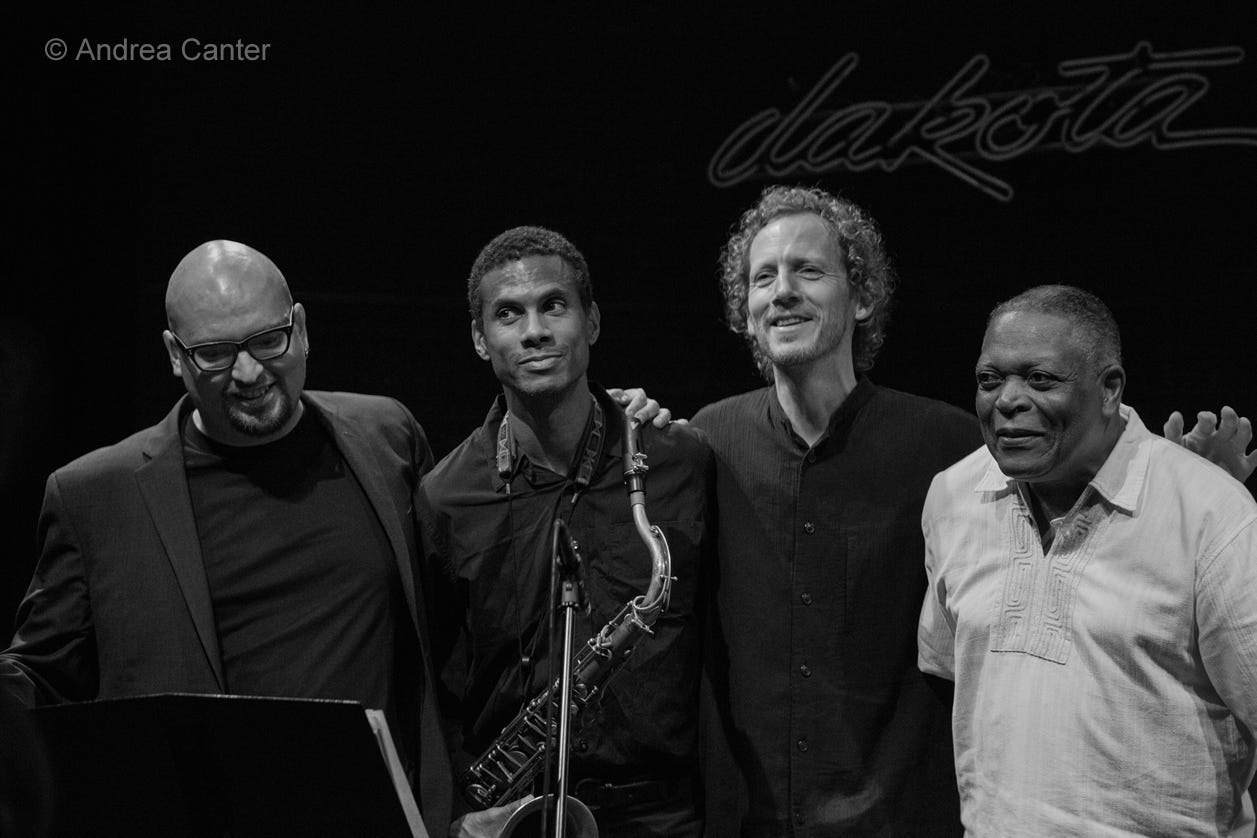
With the quartet, I was able to return to the avant-garde style of Enchance, the multi-directional line. Liebman had something to do with that, too, for Lieb had hired me for a recording of Coltrane’s Meditations suite, and I found a few new things to play that I really liked. Already with Richie in Quest, there was a more lyrical approach to multi-directional music than the full-on fire of the post-Ascension churn, and the pianist in Liebman’s Meditations group, Phil Markowitz, kept that going with a big assist from the great Cecil McBee.
I can see Beirach, Markowitz, Mark Gray, Kirkland, Kikoski, and Copland as all connected to each other harmonically. Ethan is different, and has a totally unique way of harmonizing my melodies, somewhere between Thelonious Monk and a Hollywood film score. Ethan helped me put together my most epic multi-directional composition, “Song for Balkis,” which opens our album All Our Reasons in a 13-minute performance.
Musically, Mark Turner is really the quartet’s ace in the hole. Everyone knows that he is one of the finest — if not the finest — tenor saxophonists of his generation, yet somehow he keeps coming back to play in the quartet. He’s incredibly influential, I can’t tell you how many young tenor players I’ve heard imitate Mark Turner. Mark is a genius and an innovator. We’ve had the very highest level subs for Mark: Josh Redman, Chris Potter, and Dayna Stephens. Josh and Chris are stars: they can tell a story and put the audience on the same page in a way that is undeniable. Dayna is more like Mark, a bit mysterious and elliptical, committed to the search. But it will always be Mark’s gig if he wants to keep doing it.
Some of what makes Mark Turner unique is his interest in Lennie Tristano, Lee Konitz, and Warne Marsh. I played with Lee quite a bit in the ‘70s but never paid much attention to the Tristano school otherwise, although Liebman studied with Tristano and both Wayne Shorter and Herbie Hancock credit that school as an influence. I did notice that when Mark Turner started playing in my band, Lee Konitz was suddenly at all my gigs to see Mark. I really love Mark’s 5/4 tribute to Tristano, “Lennie-Groove,” just like everyone else. So many people have played “Lennie-Groove” that it’s almost like “Giant Steps” for that generation of musicians.
Ben Street really believes in the tradition. I do too, but I may have met my match with Ben Street. We both search for logical solutions to the most “out” music: that there is always a way to make the avant-garde presentable. He also worked with the modern historian of the clave, Danilo Perez. I can play anything with Ben and he will hear it and make it work.
With Ben I noticed how he loved Jimmy Garrison. Garrison’s work with John Coltrane remains underrated. My peers didn’t always keep Garrison’s contribution in the forefront: Indeed, the bassists in this chapter so far, Dave Holland, Buster Williams, Eddie Gomez, Cecil McBee, Ron McClure, and Santi Debriano, are not so much in the Garrison line, except perhaps for Buster, who shares that gritty Philadelphia lineage. (Jymie Merritt was one of those Philly bassists: One time Lee Morgan turned around to look accusingly at Merritt, who had gone fully into a moment of breaking up the time with unexpected double-stops. Merriit responded to Morgan’s glare by yelling, “It’s too late, Lee!” as he stayed inside his abstract bass patterns.)
The younger generations have done something to bring back Garrison into the music: I was impressed when one of the biggest bass stars of his era, Larry Grenadier, told me that he was trying to get to Garrison. The bassists that have subbed for Ben in the quartet, Thomas Morgan, Joe Martin, and Joe Sanders, all know their Garrison as well.
At first I was taken aback by the sparse approach employed by everyone in the quartet. Mark’s solos would begin slowly, Ethan would lay out, Ben’s low thumps could make Garrison sound busy in comparison. I was used to my peers, like Quest, the Oceans of Time band, or the music on Great Friends, where we fervently played thousands and thousands of notes in the post-Coltrane tradition. But since the quartet was so sparse, the texture allowed my drumming to speak clearly. For the first time, I also started setting up many of the pieces with unaccompanied drum solos. Ethan insisted on including many blues pieces, to the point where I’ve been surprised at how much of a blues band the quartet has become. Mark, Ben, and Ethan have all expressed appreciation at how playing in my band gives them a chance to learn about the tradition.
If the quartet features my softer and bluesier side, then The Cookers is where the modal fury remains. That’s almost the reason for that band, to keep the passion from an earlier era alive. David Weiss is like Ethan, he organizes the band and books the tours. Internally it is fairly collective, with everyone contributing compositions and telling stories. The names of the musicians in the Cookers are a roll call of the best: Billy Harper, Eddie Henderson, Donald Harrison, George Cables, and Cecil McBee. (Craig Handy and Azar Lawrence also have played in the Cookers on record.) I look up to them all as mentors and teachers.
In 2016, my old friend Jessica Felix honored me at her Healdsburg festival in California. “40 Years of Billy Hart” included the Enchance repertoire in a group with Eddie Henderson, Oliver Lake, Joshua Redman, Craig Taborn, and Dave Holland, the Oceans of Time repertoire with Craig Handy, Chris Potter, Mark Feldman, Dave Fiuczynski and Cecil McBee, plus the standard line ups of Quest and the Quartet. It was just fabulous of Jessica to give me that opportunity.
My discography covers a lot of terrain, but one area that has not been documented is the percussion ensemble. In the ‘70s, Horacee Arnold put Colloquium III together with Freddie Waits and myself. We did a few workshops and gigs but never recorded. Milford Graves put together an epic Harlem performance of multi-directional drummers that included Rashied Ali, Beaver Harris, Ed Blackwell, Andrew Cyrille, and myself.
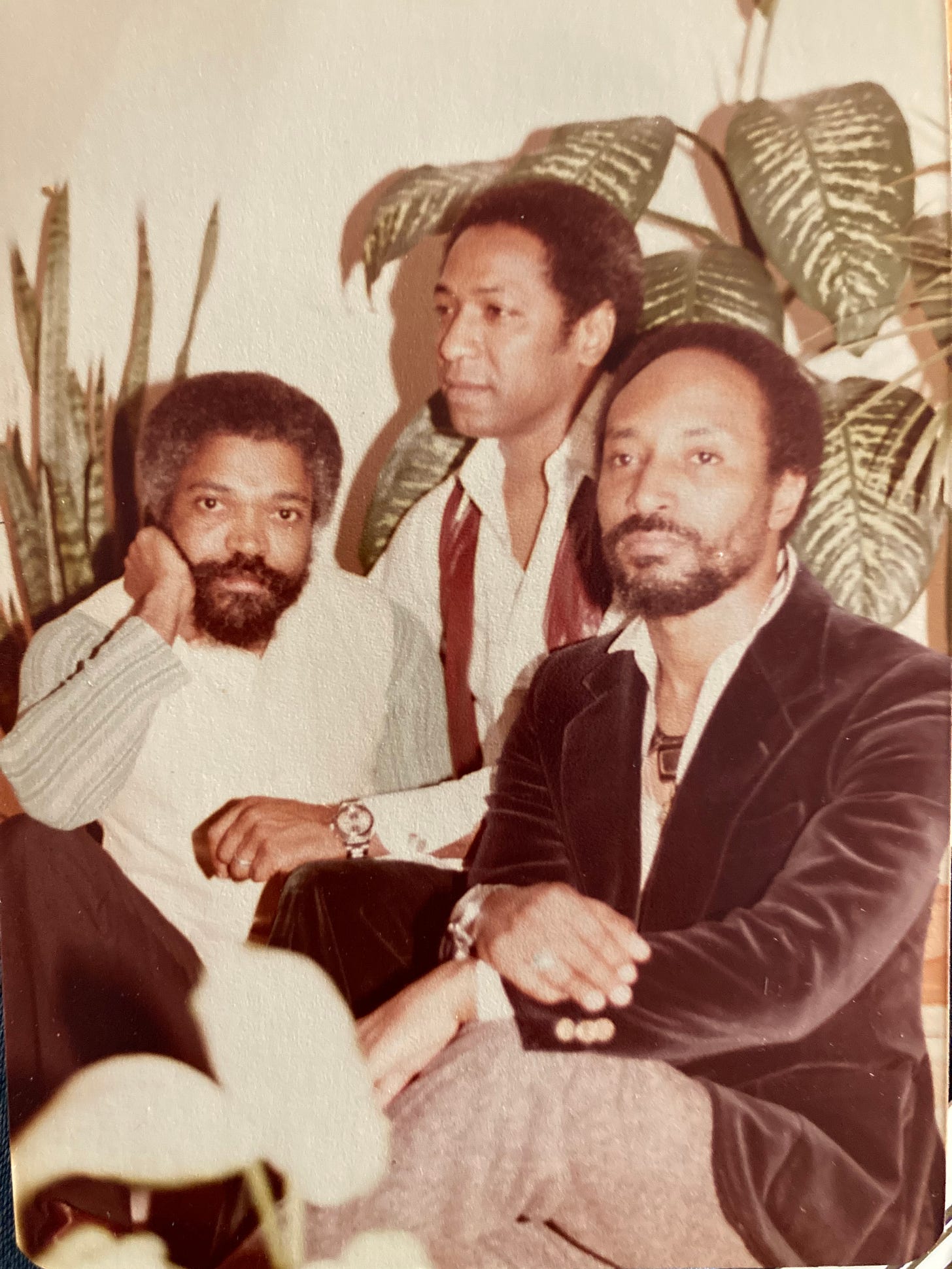
More recently Andrew Cyrille and I have played duo and trio with guest saxophonists including Dave Liebman, Joe Lovano, David Ware and Gary Bartz. Together Andrew and I performed at the memorial for Paul Motian. In each case, I love rehearsing and performing with other drummers in a context where the spotlight is truly on the drums.
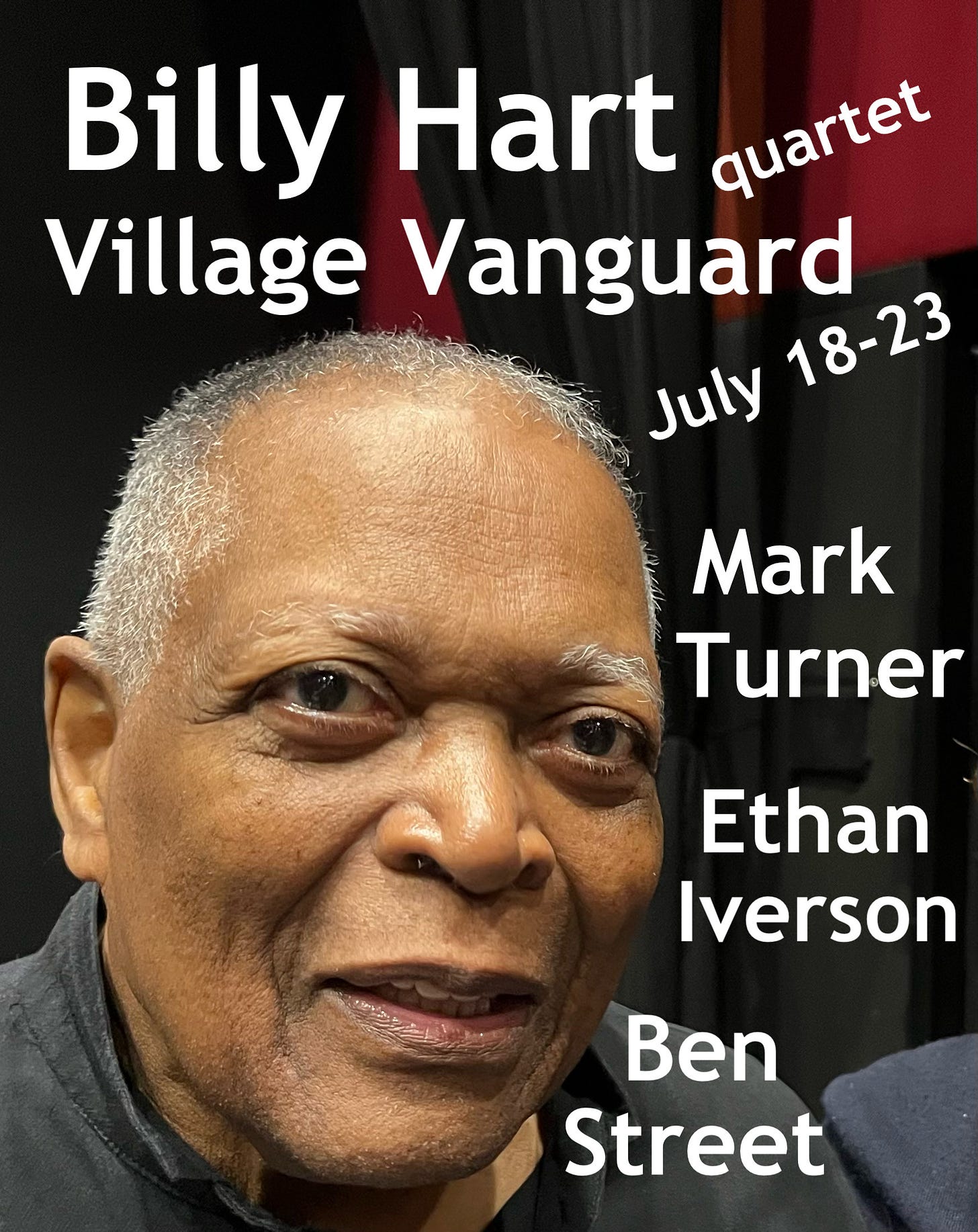

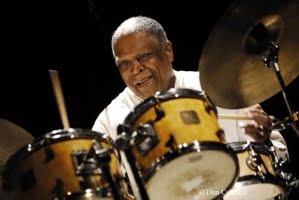




More Stories
CD review: George Benson – Dreams Do Come True: When George Benson Meets Robert Farnon – 2024: Video, CD cover
The band was tight as ever. The Warren Haynes Band cuts loose: Video, Photos
Interview with Alvin Queen: Feeling Good – I heard these tunes played by … Video, new CD cover, Photos